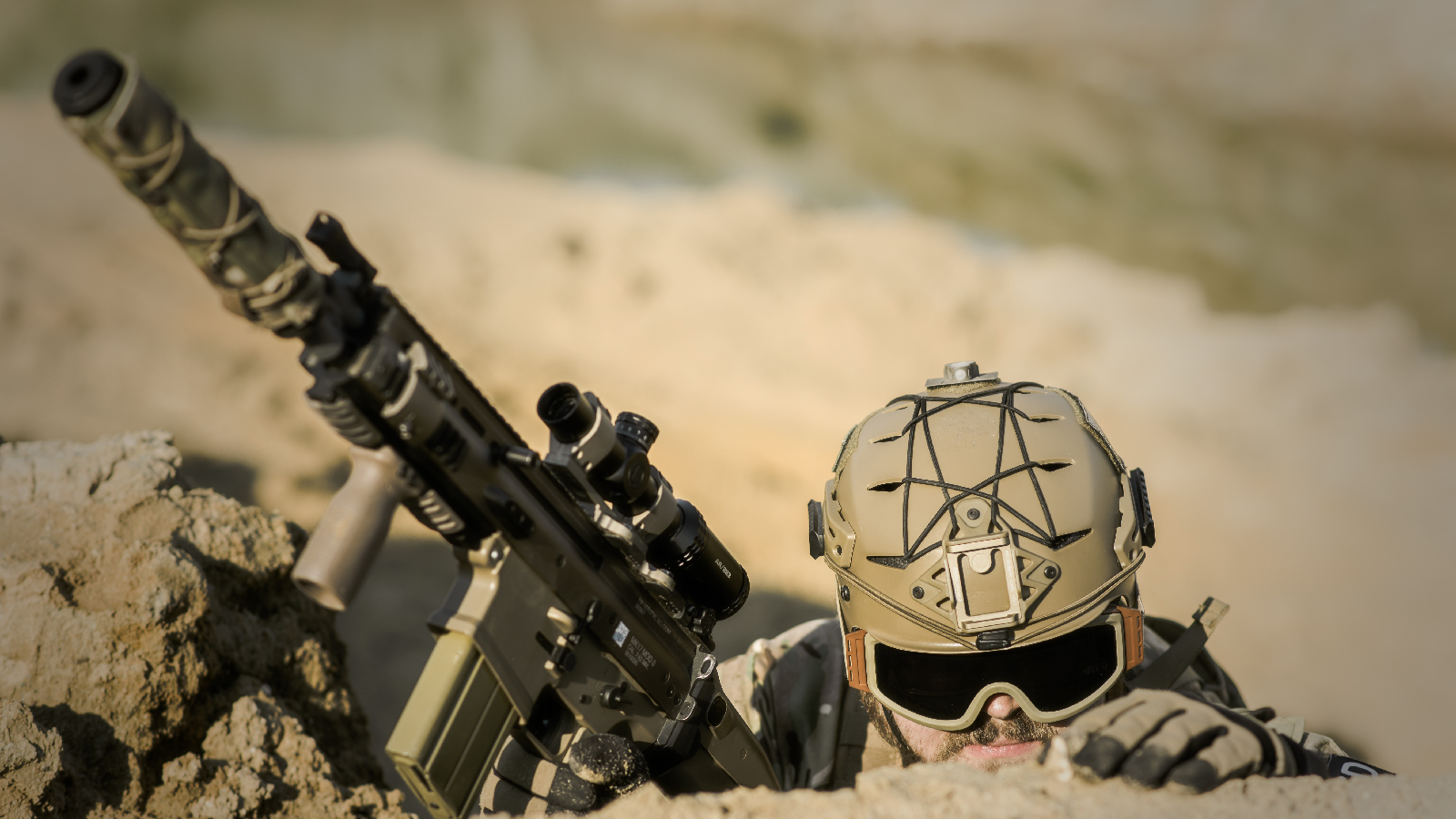Ten days after armed Russian mercenaries joined with Syrian fighters in a surprise attack against U.S. and U.S.-backed forces in northeastern Syria, only to be decimated by U.S. counter-attacks, then-Defense Secretary James Mattis said the American government still didn’t know why the Russians did it, or who exactly gave them the order.
“I understand the Russian government now is saying some of their not military forces but contractors were involved in that still-unexplained attack on the SDF [U.S.-allied Kurdish forces] to [the] east of the river,” Mattis told reporters at the time.
Mattis said the U.S. had been in contact with Russian officials on what’s known as the “de-confliction line,” which was designed to assure U.S. and Russian forces didn’t stumble into direct confrontation. But apparently the Russian officials there were unaware of what was going on on the evening of Feb. 7, 2018 as nearly 300 soldiers, made up of Syrian forces, tribal fighters from the region and some Russian mercenaries launched an attack on the U.S.-supported base, which housed U.S. special operations personnel. The U.S. responded, killing dozens in airstrikes, including at least a few Russians, and stopping the attack in its tracks.
“So it is what it is,” Mattis said. “I still cannot give you any more information on why they would do this. But they took direction from someone. Was it local direction? Was it from external sources? Don’t ask me. I don’t know. But I doubt that 257 people all just decided on their individual own selves to suddenly cross the river into enemy territory and start shelling a location and maneuvering against it. So whatever happened, we’ll try to figure it out. We’ll work with, obviously, anyone who can answer that question. But I cannot, at this time.”
Russia, for its part, initially denied any Russian casualties, but later acknowledged that some Russian citizens, acting of their own accord, had died in the battle — but certainly no Russian military forces.
RELATED: Russia Stays Mum About Comrades Killed By US-Led Forces in Syria
Nearly three years later, there remain few concrete, public answers to Mattis’ questions. But one theory, versions of which were floated at the time, was explained recently by a former U.S. military officer who ran the U.S. cell for de-confliction with Russia the year before the 2018 disaster. It has to do with “curators.”
“The Kremlin has operated for a long time on this concept of curators, who are people are sort of loosely connected to the Kremlin — they may be oligarchs, businessmen in industries that the state has a large share in or the state exercises sort of strategic direction over, some of them are media figures that are connected to the Kremlin,” Col. Robert Hamilton (Ret.) said on the latest episode of the Modern War Institute at West Point’s Irregular Warfare Podcast. “But they operate on, I guess the military terminology would be ‘mission-type orders.’ … You get general guidance and direction from headquarters, you understand the end-state that they want, you understand the sort of intent, and you’re free to ad-lib. You’re free to achieve the intent using your own devices.”
RELATED: ‘Graymail’ Works for Russia? DOJ Drops Charges Against Russian Firm
Hamilton, now an associate professor of Eurasian Studies at the U.S. Army War College, said it was possible this was the case in Syria of the Russian mercenaries working with the a Russian private military outfit known as the Wagner Group. Wagner Group is suspected by the U.S. government to be run by Yevgeny Prigozhin, a confidant of Russian President Vladimir Putin known in the media as “Putin’s Chef.”
Prigozhin came to international prominence around the time of the Syria incident after he was named by the Department of Justice for allegedly funding the so-called St. Petersburg “troll factory” that aimed to disrupt the 2016 presidential election. Prigozhin denied involvement and, along with most other defendants in the case, did not answer the charges in court. A spokesperson for Prigozhin also reportedly previously denied any link to Wagner.
Hamilton and fellow podcast guest Candace Rondeaux, who recently published a report for New America about the Wagner group and the February 2018 attack specifically, discussed the value of the use of private military contractors (PMCs, or PMSCs) by Russia both to hide their hand in international operations and to distance themselves from any potential fallout.
“Neither fully within the state nor outside of it, PMSCs are, in theory, an attractive way of lowering costs of intervention while extending Russia’s reach,” Rondeaux wrote in the report. “In practice, the Kremlin’s reliance on PMSC operations in fragile states has gained Putin and his closest political allies many benefits.”
But, Hamilton noted, it comes with a drawback that played itself out with disastrous consequences in Syria: that distance from operations also means a lack of control or oversight over them, whether that’s on accident or on purpose.
“The problem is sometimes the military headquarters is cut out of the loop,” he said. “My sense of the February 2018 incident in Syria is that the Russian headquarters was either out of the loop completely or had been told, ‘There’s an operation ongoing in eastern Syria that you’re not involved in.’”
If there was any kind of orders from the top, Hamilton said the Kremlin could have made use of the high-level “curators” to pass the orders along directly to the mercenaries on the ground, bypassing the military completely.
“Then that gives the military headquarters the deniability, and then the Russians, if it turns out badly like it did, it isn’t framed as a military defeat, it’s framed as an aberration or a mistake or an operation that went awry in some way that the military wasn’t involved in,” he said.
But 33 months after the battle, Rondeaux writes in her report that so far, “no direct line has been traced between Prigozhin and the events that took place that fateful day in February 2018 in northeastern Syria.
“Whether the Russian men cut down by the U.S. airstrike there were acting entirely of their own private volition, working for Kremlin insiders, or were servicing the Russian state remains debatable,” her report says. “But that may be by design.”
Primary Source: Russia’s Wagner Group and the Rise of Mercenary Warfare (Irregular Warfare Podcast)
Primary Source: Press Gaggle by Secretary Mattis En Route to Washington, D.C. (Defense.gov)
Primary Source: Decoding the Wagner Group: Analyzing the Role of Private Military Contractors in Russia Proxy Warfare (New America)
[Like what you see and read on Code and Dagger? Become a Patreon and help keep the lights on. Do you have a tip or question? Reach out at CodeAndDagger@protonmail.com.]











